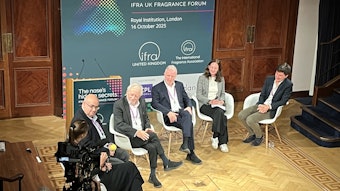
The color of a material generally results from light absorption, reflection and scattering. Alternatively, micro-to-nano-scale structured materials can impart optical interference phenomena, resulting in structural coloration. Examples of structural coloration abound in nature but also can be found in synthetic photonic structures such as colloidal crystals.
However, according to this Harvard patent application, combining structural coloration and absorption improves color saturation and creates novel color effects. In fact, surprising optical effects from specifically designed combinations of absorbing and dielectric materials have been demonstrated. For example, combining an absorbing layer with a thin film can create asymmetric absorption properties. Indeed, we learned all about creative layering in our latest Advisor Insight, from Jane Hollenberg.
Here, inventors explore how the system of a structural color material and an absorbing layer can impart an anomalous phase shift on the reflected light. This enables the reflected color from one side of the material to be arbitrarily different from the reflected color from the opposite side.
Modifying optical properties of thin film structures using absorbing element
WIPO Pat Application WO/2017/041085
Publication date: March 9, 2017
Assignee: President and Fellows of Harvard College
This invention describes a method of making a multi-layered film that includes depositing transparent, thin layers of film onto a first side of a double-sided transparent substrate whose adjacent layers have different refractive indices. One or more absorbers are then deposited at an interface between two of the thin film layers adjacent to one another, or formed by the first side of the substrate and one of the thin film layers.
The absorbers absorb selected wavelengths of incident light and reflect part of the incident light after inducing a phase shift. The location of the interface is selected to provide desired wavelengths of absorbed and reflected light with a first appearance when viewed from the first side of the substrate and a second appearance from the second side of the substrate.
According to the inventors, applications include but are not limited to optical materials, flat glass, display signs, cosmetic products and anti-counterfeiting materials, among others. In particular, this multi-layer film may be crushed and/or broken into flakes and particles that can be added as a component in a paint or primer formulation.










